When it comes to checking tire tread, there are a number of methods that can help you know if it’s time to replace a tire. Heavily worn tread will prevent a tire from performing as designed and can lead to unsafe driving conditions. One of the simplest, most common ways to check tread depth requires nothing more than a penny and a few moments of your time.
In the United States, tire tread depth is measured in 32nds of an inch. New tires typically come with 10/32” or 11/32” tread depths, and some truck, SUV and winter tires may have deeper tread depths than other models. The U.S. Department of Transportation recommends replacing tires when they reach 2/32”, and many states legally require tires to be replaced at this depth.
The idea of the penny test is to check whether you’ve hit the 2/32” threshold. Here’s how it works:
Place a penny between the tread ribs on your tire. A “rib” refers to the raised portion of tread that spans the circumference of your tire. Tire tread is composed of several ribs.
Turn the penny so that Lincoln’s head points down into the tread.
See if the top of his head disappears between the ribs. If it does, your tread is still above 2/32” , If you can see his entire head, it may be time to replace the tire because your tread is no longer deep enough.
When performing the penny tire test, remember not only to check each tire, but to check various places around each tire. Pay special attention to areas that look the most worn. Even if parts of your tread are deeper than 2/32”, you should still replace the tire when any areas fail the penny test.
Consistent wear around the whole tire is normal, but uneven tread wear could be a sign of improper inflation, wheel misalignment, or a variety of other things. If you see uneven tread wear, you should have a technician inspect your vehicle.
A simple way to check your tire tread depth is by using a tread depth gauge. You can find tire tread depth gauges at your local auto parts store. There are many models available, but an inexpensive simple graduated probe gauge will work just fine. All you have to do is stick the probe into a groove in the tread and press the shoulders of the probe flat against the tread block and read the result. All gauges should measure in both 32nds of an inch and millimeters.
You can find tire tread depth gauges at your local auto parts store. There are many models available, but an inexpensive simple graduated probe gauge will work just fine. All you have to do is stick the probe into a groove in the tread and press the shoulders of the probe flat against the tread block and read the result. All gauges should measure in both 32nds of an inch and millimeters.
Another indicator of worn out tread already lives in your tires themselves. Every performance, light truck, or medium commercial tire comes equipped with indicator bars (or wear bars) embedded between the tread ribs at 2/32”. They’re there to help you monitor tread depth and make decisions about tire replacement. Just look to see if the tread is flush with the indicator bars. If they are, it’s time to replace the tire.
While the penny tire test does deliver on what it promises – indicating whether tread has reached the legal limit – it may not be the best indicator of whether your tires are safe for the road.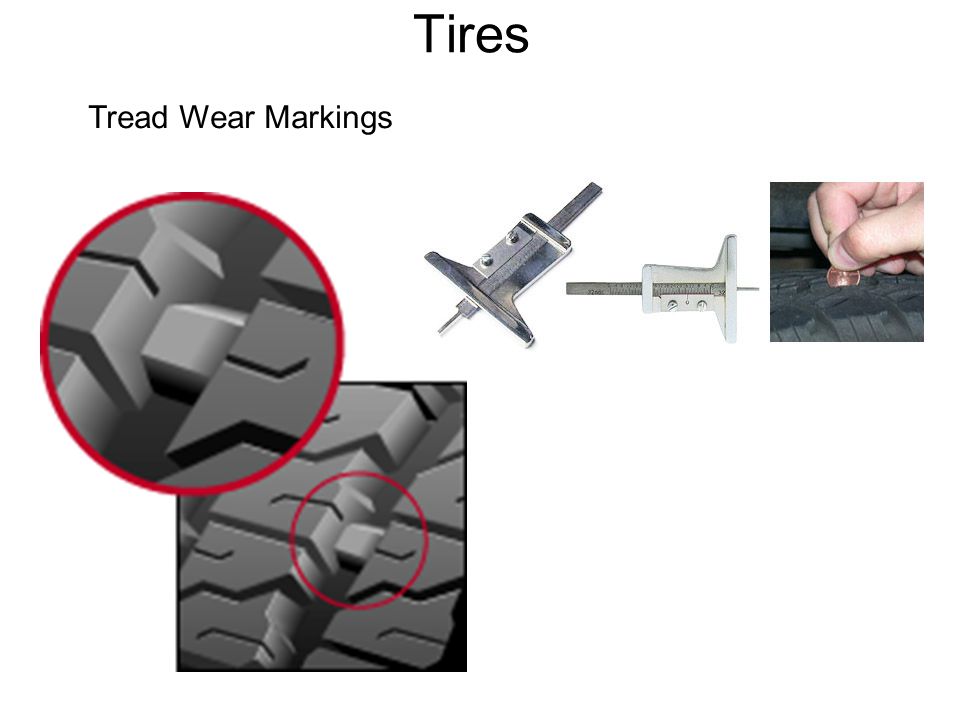 Tire performance can diminish significantly before your tread hits 2/32”. Even though the law deems fit for safe driving may not prevent you from hydroplaning or losing control in rainy, slushy conditions. If you think your tires may be close to needing replacement, have them checked out by a licensed mechanic.
Tire performance can diminish significantly before your tread hits 2/32”. Even though the law deems fit for safe driving may not prevent you from hydroplaning or losing control in rainy, slushy conditions. If you think your tires may be close to needing replacement, have them checked out by a licensed mechanic.
Your tires form the essential bond between your vehicle and the ground. The tread grips the road as you drive. But if it's not deep enough, your car loses traction and suffers extended braking times. Shallow tread grooves make it harder to control the vehicle in wet weather and the chance of aquaplaning increases.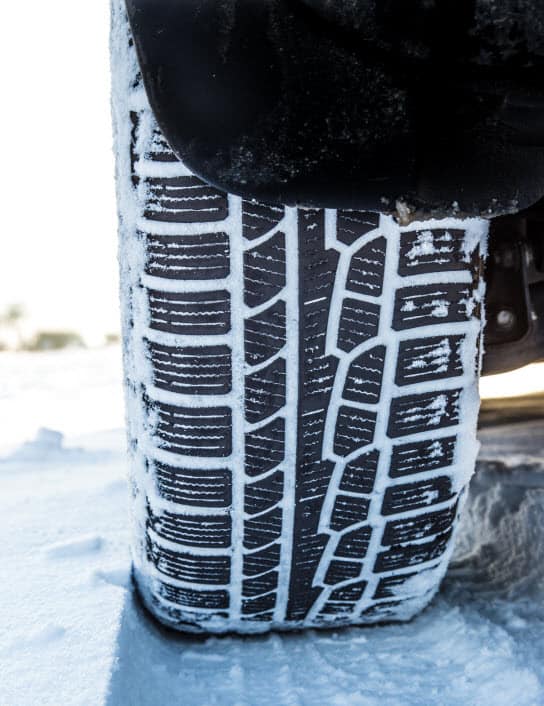 To ensure your safety, measure the tread depth as part of your regular vehicle maintenance.
To ensure your safety, measure the tread depth as part of your regular vehicle maintenance.
Tread is the rubber on the tire that touches the road. New tires have an average tread depth of 8 to 9 millimeters (10/32 to 11/32 inches). As you drive, the tread will wear down. A tire with a tread depth below 1.6 millimeters (2/32 inches) lacks grip. Braking distance and vehicle control are impaired. These tires are not safe for driving and must be replaced.
Please consider that safe driving in wet and snowy weather conditions is affected by the tread depth, the pattern design and the rubber compound of the tread of your tires. On wet or snow-covered roads braking performance will progressively decline with lower tread depths. On wet roads there is an additional increased risk of aquaplaning with fading tread depths.
Therefore, check your tires regularly, reduce your speed on wet and snowy roads and consider replacing your tires in good time.
Ensure your vehicle is equipped with the correct winter, summer, or all-season tires.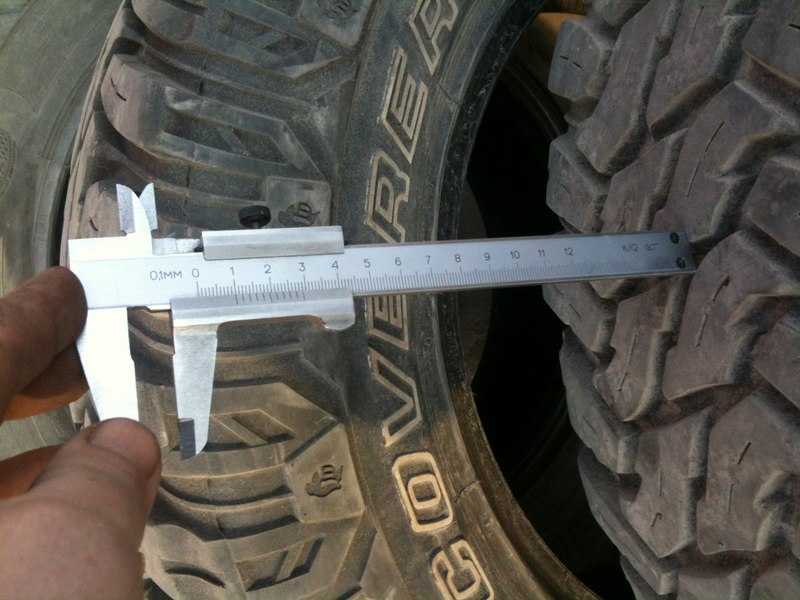
Tread wear indicators, or wear bars, are spaced evenly through the main grooves in the tire tread. If they are flush with the level of the tread, then the tire should be replaced.
Several winter tire models are equipped with winter tire wear indicators. If they are flush with the level of the tread, the tire is no longer suitable for winter driving conditions. In some locations, they may also no longer legally qualify as winter tires.
The tire tread grips the road and wears down as you drive. To ensure your safety, measure the tread depth as part of your regular vehicle maintenance.
If you have a tire tread depth gauge, use it to measure the tread depth. Insert the probe bar into the groove and push the shoulders flush with the tread. Check the top of the gauge to see the measurement. Alternately, a small ruler can be used.
Be sure to check in various locations. A misaligned wheel may result in uneven treadwear. Keep an eye open for any areas that look more worn than the surrounding surface. The tire's tread should be judged by the lowest depth you measured.
Keep an eye open for any areas that look more worn than the surrounding surface. The tire's tread should be judged by the lowest depth you measured.
If you are uncertain of the measurements, take your vehicle to a service center.
While measuring the tread, look for cupping, or scalloping. These are small scoops, or divots, carved from the tread. They can indicate misalignment or other problems with your vehicle. Take your car to a service center.
Also, watch out for bulges in the tire tread or sidewall. They are not safe. You need to get a new tire.
The tire tread is the outer part of the wheel that provides traction in all weather conditions. The protectors inevitably wear out during the operation of the car, the working height of the slope decreases. The residual tread depth should be periodically monitored and the set of tires should be renewed in time - this will reduce the risk of losing control of the car and save the car owner from fines from the traffic police.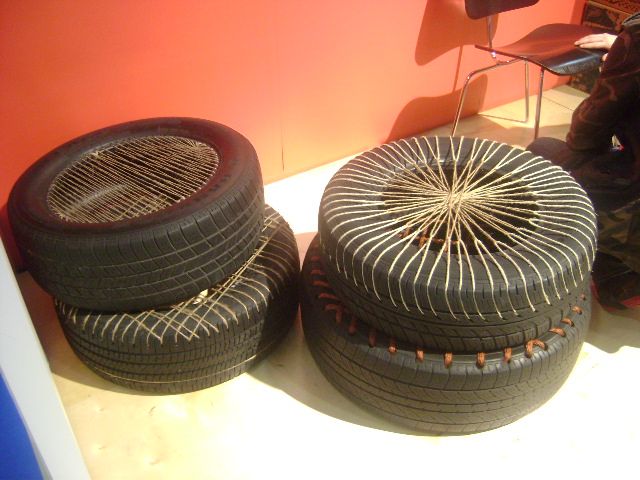
Tread wear rate depends on many factors:
Measuring the thickness of the tread layer will allow you to accurately determine the degree of tire wear and make a decision in time to replace them with new ones.
Different tires have different wear limits. Tread depth affects vehicle handling and road safety.
| According to Chapter 5 of the SDA, limiting norms for the height of the tread pattern have been established. For category M1 - passenger cars - as well as vehicles of categories N1, O1 and O2, the minimum allowable value is 1.6 mm. When using winter tires on snowy or icy surfaces - the limit is 4 mm. |
Let us explain what categories of vehicles we are talking about:
N1 - vehicles intended for the carriage of goods, having a technically permissible maximum mass of not more than 3.5 tons;
O1 - trailers, the technically permissible maximum mass of which is not more than 0. 75 tons;
75 tons;
O2 - trailers, the technically permissible maximum weight of which is over 0.75 tons, but not more than 3.5 tons.
The traffic police officer has the right to measure the residual depth with a verified device. In case of a recorded violation, a fine is imposed on the car owner.
The new summer tire has an average tread depth of 7-8 mm. The service life of summer tires is usually 3-5 seasons with average mileage and moderate driving style.
| Residual height limitation by law is 1.6 mm. However, with a remaining outer layer of 3 mm, the machine is already difficult to control, grip deteriorates, and a safety hazard arises. |
Do not wait until the critical value is reached. Make sure you change tires in advance.
Winter tires are used in severe weather conditions: low temperatures, icy conditions, on snowy road surfaces.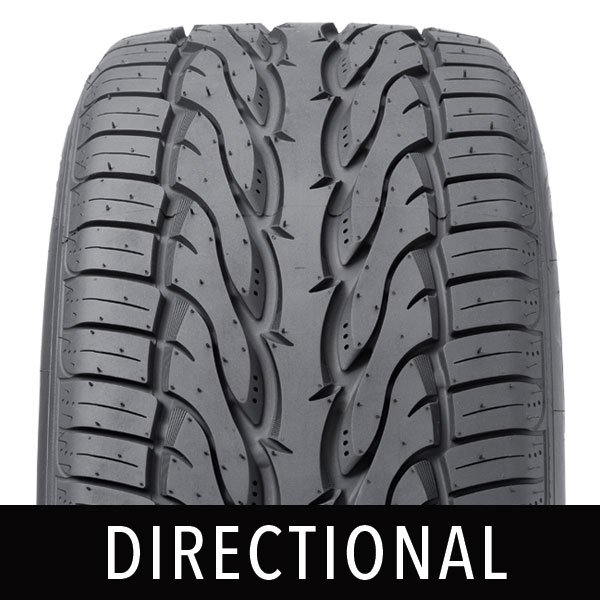 Worn elements make the tire ineffective on slippery winter roads. Accordingly, a more serious approach to the condition of the tire tread is needed.
Worn elements make the tire ineffective on slippery winter roads. Accordingly, a more serious approach to the condition of the tire tread is needed.
Non-studded friction tire (velcro) with tread depth 8-9mm. A new studded model - from 9 to 11 mm, some firms produce a tread with a height of 12-18 mm.
| If the tread wear is up to 4-5 mm, the winter set of tires needs to be replaced. In addition, the loss of more than 50% of the metal spikes is also a reason to change the car's shoes. |
The average life of winter tires is 2-4 years.
Universal all-weather is used in a temperate climate both in winter and in summer, it is optimal at temperatures from +10 to -10˚C. This type of tire is not suitable for use in snowfall or severe frosts. SDA allows the use of all-season tires in the winter if there is a special marking:
| All-season tires last 3-4 years on average. |
You can estimate the remaining tread layer in various ways:
On some tire models there are special volumetric indicators in the form of jumpers. Check: if the tread layer is worn down to the level of the jumpers, the tire is not suitable for further use.
On the surface of certain types of tires, manufacturers knock out numbers of various depths. Depreciation is assessed visually - by the visibility of individual numbers.
With the help of measuring instruments: from a metal ruler, caliper, depth gauge to an electronic tread depth gauge.
Many motorists measure the remaining tread depth with a coin. Warning: this method of measurement is not accurate. It will not show you actual tire wear figures.-wide-guide.jpg)
Tire tread height should be measured at least at 6 different points, preferably at 9 or even 12: in the center and from both edges of the tread, at different points around the circumference of the tire. The measurement results at all specified points must match. If they do not match, then the tire wears unevenly. The driver should find out why this is happening. Some causes of uneven tire wear are low or high pressure in them relative to the regular one, suspension failure, extreme driving style.
Old tires have become unusable, the amount of tread remaining is approaching a critical line - no need to take risks, it's time to change your car's shoes. There is a great temptation to get by with small financial costs and purchase a set of used tires. Be careful!
Sellers advertise used tires as good or excellent condition. Do not be too lazy to personally measure the height of the tread layer. And remember: for winter tires, a residual tread depth of 4 mm is already 100% wear.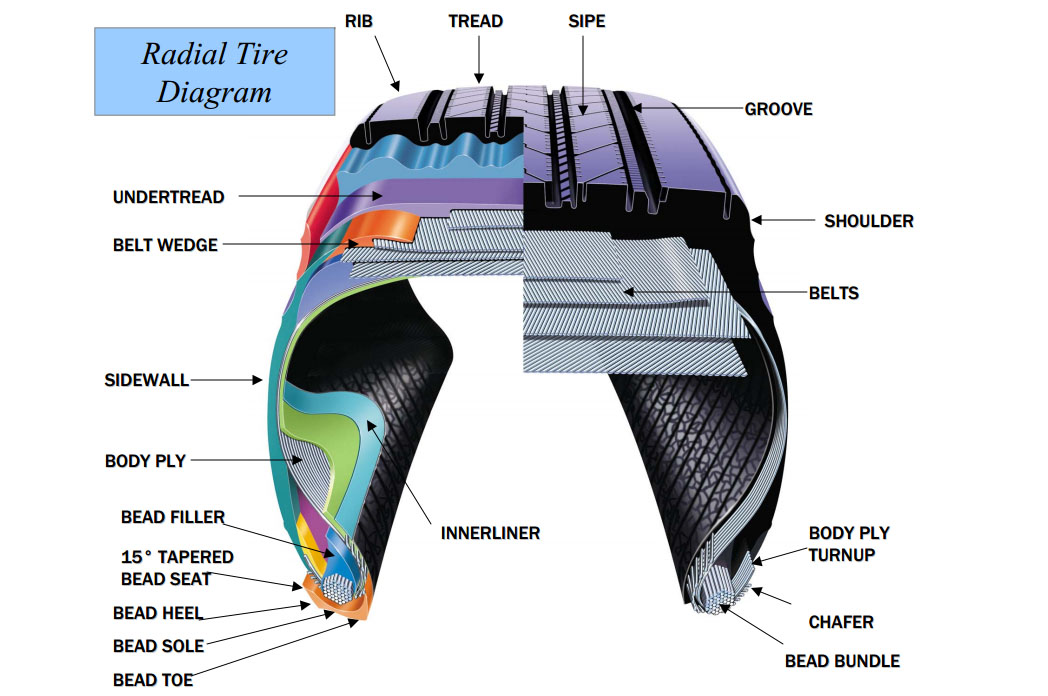
When buying used tires with tires, it is important to remember that tires from different manufacturers and seasons initially have different tread heights (when they are new). And most importantly: the tires have, accordingly, different wear limits - the tread depth at which the tire begins to lose important characteristics. These differences are most noticeable in winter and summer tires. Keep these points in mind when measuring the remaining tread depth of used tires.
The quality of domestic roads, unfortunately, does not allow tires to be used for 7-10 years. If you still decide to buy a used kit, check the year of manufacture - it is better not to consider tires older than 8 years.
there is no guarantee for tires bought from hands;
the seller can cheat - for example, offer tires from different manufacturers in one set. Some especially enterprising salesmen even cut the tread on the worn rubber, as if the tires had not yet worn out;
you will have to spend a lot of time picking up tires from private sellers - much of what is put up for sale is only suitable for recycling;
Products may have hidden or visible defects.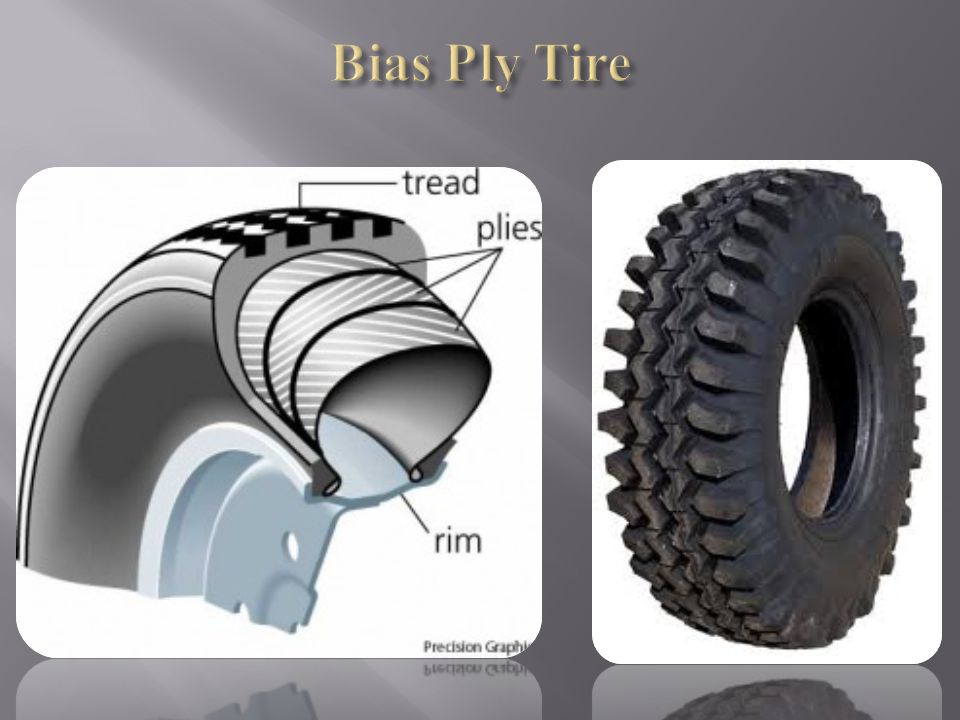 Visible are punctures, tears, cuts. A tire with a lot of damage can collapse in motion. Hidden defects include damage to the cord, which most often occurs after punctures or a strong blow. A car with such a malfunction may wiggle on the road, and it will be unstable;
Visible are punctures, tears, cuts. A tire with a lot of damage can collapse in motion. Hidden defects include damage to the cord, which most often occurs after punctures or a strong blow. A car with such a malfunction may wiggle on the road, and it will be unstable;
the goods were stored in the wrong conditions, for example, under direct sunlight - this reduces the life of the tires and they will quickly become unusable, even if the residual tread depth is ideal;
it is not always possible to carry out a tire fitting in the presence of the seller, you will have to check the kit yourself after payment.
Without a specialist, there is a risk of buying tires that you cannot use. Don't skimp on safety. Purchasing a new set of tires will require more investment, but will pay off with a long period of trouble-free operation.
The maximum permissible residual tread depth for a passenger car is 1.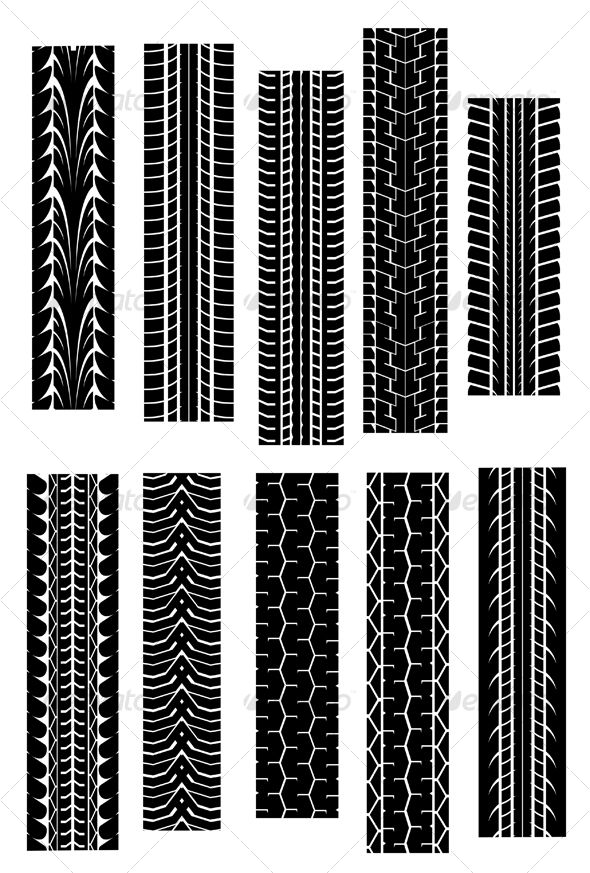 6 mm in summer and 4 mm in winter.
6 mm in summer and 4 mm in winter.
SDA strictly regulate the residual height of the tread pattern. Violation of traffic rules is a reason for drawing up an administrative protocol.
For your own safety, replace worn tires on time. Better for new ones.
The depth of the tread determines the safety of the ride, so it must meet certain established standards. This indicator is able to provide a ride with comfort, which is possible only when the auto systems are working correctly. When the tread begins to wear out, it is better to replace the tires with new ones in order to prevent unforeseen situations on the road and the possibility of an accident.
A tire tread is a rubber layer that has grooves and channels. During operation of the tire, the tread wears out, due to which, after a while, the efficiency of using the tire decreases.
Seasonal tread specifications:
Performance specifications:
Summer and winter tires differ purely visually. Winter ones have a softer coating and a large number of slots. They provide a comfortable ride even on snow or ice. They have a rough and deep tread, as well as a completely different pattern. In addition, many models have spikes, more lamellas and drainage channels for normal grip on a winter road.
Winter tire options:
Car tires must have a minimum tread depth of 4 mm when driving in winter.
Summer tires must withstand high temperatures, as the asphalt is very hot in summer. They are made from a special rubber compound and are tougher than winter ones. The tread height of summer tires is about 6-8 mm. This indicator mainly depends on the brand-manufacturer and model. The minimum tread depth on summer tires is 1.6 mm.
. This must be taken into account when driving in adverse weather.
Signs of wear:
Worn tires have smaller sipes on the tread that do a poor job of wicking water away from the rubber contact patch. As a result, the speed of the vehicle is reduced.
The less tread left, the more critical the situation. So, the use of “bald” tires is quite dangerous, and can lead to unpleasant surprises on the road.
Naked tires have a smaller footprint, which is dangerous in rainy weather. We recommend that you regularly take an interest in the condition of the rubber and, if necessary, replace them with new ones. This is the only way to significantly reduce security threats.
We recommend that you regularly take an interest in the condition of the rubber and, if necessary, replace them with new ones. This is the only way to significantly reduce security threats.
To determine the tread depth and percentage of tire wear, a special device is used that allows you to measure the depth of the tread grooves in different places.
Measure at several points on the wheel. Measurements must be taken on all 4 wheels. It is very desirable that the obtained indicators coincide with each other, otherwise you are threatened with further uneven wear of the tread. This is possible with insufficient or excessive pressure in the wheels. If the cause of uneven tire wear is not eliminated in a timely manner, the wheels will very soon become unusable, and riding on them will no longer be safe.
Tire wear indicators can only visually assess the condition of the rubber. The wear indicators are located in the recesses of the relief.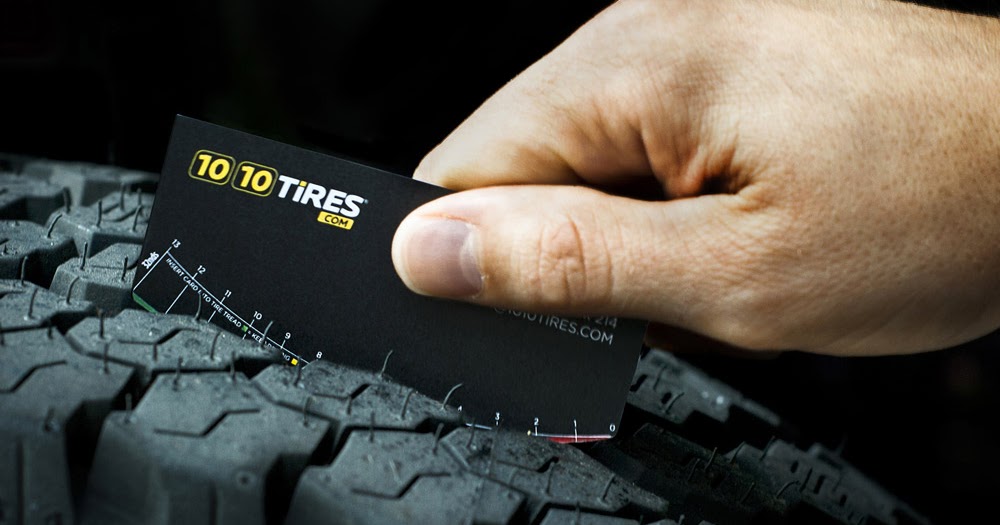 In worn rubber, they are flush with the surface. If indicators are not provided in the rubber, use a caliper. The probe of this tool and check the measurements on the scale. You need to understand that tire wear can be uneven, so you need to take measurements in several places.
In worn rubber, they are flush with the surface. If indicators are not provided in the rubber, use a caliper. The probe of this tool and check the measurements on the scale. You need to understand that tire wear can be uneven, so you need to take measurements in several places.
Used tires are not always bad. Sellers sell them for various reasons, such as the car is no longer repairable. When buying used tires, you will not only save money, but also get a tire of good quality.
Consider the following points before buying so as not to be disappointed in your choice:
 Give preference to tires with the same date of manufacture, as they have the same degree of wear, which means they will last you longer;
Give preference to tires with the same date of manufacture, as they have the same degree of wear, which means they will last you longer; Perhaps, any buyer is interested in where merchants get their goods. Mostly used tires can be bought at:
The quality of used tires is not always good, but quite acceptable. Sellers are decent and not very, so we recommend not to purchase products if they do not want to give you even a minimum guarantee for the product. The main sign of a product of dubious quality is the absence of a serial number and a quality certificate from the manufacturer, which contains important information.
The main sign of a product of dubious quality is the absence of a serial number and a quality certificate from the manufacturer, which contains important information.
The most important thing when choosing, look at the marking and the date of issue. These values allow you to find out the degree of wear, age, tire model, from one set of tires or not.
Be sure to inspect the product before purchasing. It is not recommended to purchase rubber with traces of sealant, with damage to the side surfaces.
Before buying tires, determine the priority rubber performance properties:
In order to make driving safe and comfortable, it is necessary to take into account the various parameters and characteristics of rubber. Remember, tires should have grooves in the tread pattern that point towards the sidewalls.